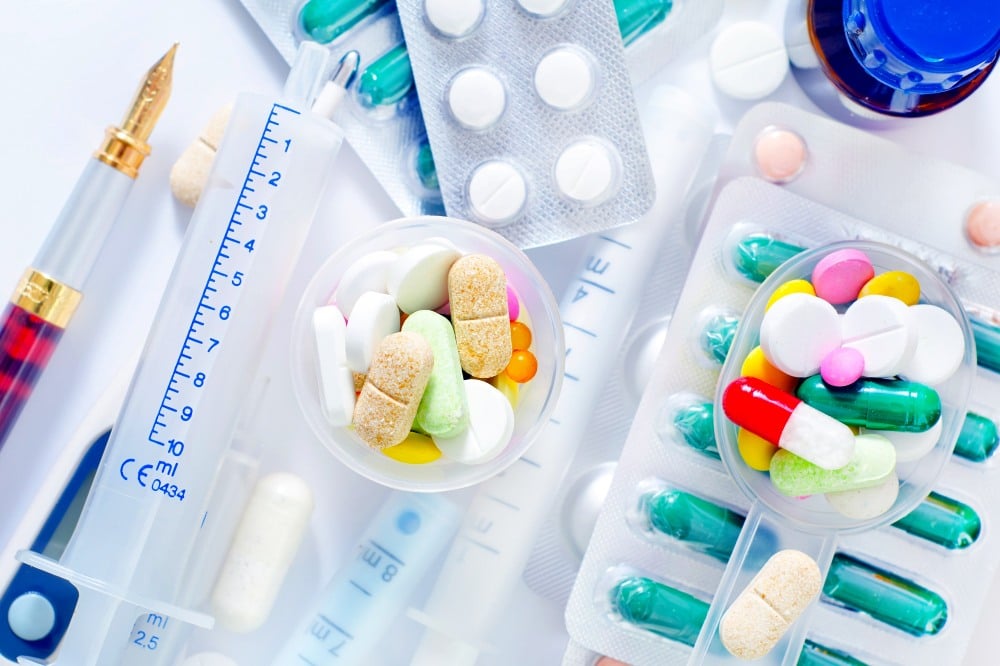The combination of gabapentin and tramadol is one that requires caution and medical supervision due to the increased risk of severe side effects, including respiratory depression, coma, and even death. Understanding the pharmacological profiles and interactions of these drugs is crucial for patients and healthcare providers alike.
Understanding Gabapentin and Tramadol
Gabapentin is primarily used to manage neuropathic pain and as an anti-seizure medication. It modifies the way pain is sensed by the brain and affects neurotransmitter levels, which are critical for nerve communication. On the other hand, tramadol, a pain reliever, functions as an opioid analgesic and affects neurotransmitter reuptake. This dual mechanism not only aids in pain management but also poses risks for side effects and interactions.
Gabapentin: Uses and Side Effects
Gabapentin is a versatile medication initially developed to treat epilepsy but has since found broader applications, particularly in pain management. Its efficacy in treating neuropathic pain—pain that comes from nerve damage or a malfunctioning nervous system—has made it a staple in the treatment of various conditions, including postherpetic neuralgia and diabetic neuropathy.
Primary Uses of Gabapentin
Beyond its use in managing epilepsy and neuropathic pain, gabapentin is also effective in treating restless legs syndrome, characterized by an uncontrollable urge to move the legs, typically during periods of rest. Additionally, it has been prescribed off-label for an array of conditions, such as anxiety disorders, insomnia, and mood disorders, demonstrating its broad therapeutic reach.
Common Side Effects of Gabapentin
While gabapentin is generally well-tolerated, it can cause several side effects, especially when treatment begins or doses are adjusted. Patients are encouraged to discuss any persistent or bothersome symptoms with their healthcare provider. Common side effects include:
- Drowsiness
- Fatigue
- Dizziness
- Headaches
- Uncontrollable shaking of parts of the body
- Double or blurred vision
- Unsteadiness
- Anxiety
- Memory problems
- Strange or unusual thoughts
- Unwanted eye movements
- Nausea and vomiting
- Heartburn
- Diarrhea
- Dry mouth
- Constipation
- Weight changes
- Swelling of extremities
- Back or joint pain
- Flu-like symptoms such as fever, runny nose, or sore throat
Serious Side Effects
Some side effects of gabapentin are more serious and require immediate medical attention. These include:
- Severe rash
- Itching
- Swelling of the face, throat, tongue, lips, or eyes
- Hoarseness
- Difficulty swallowing or breathing
- Seizures
Patients should always inform their doctor about all other medications they are taking to avoid potential interactions. It is also crucial to follow the prescribed dosages and not to discontinue the medication abruptly, as this could lead to withdrawal symptoms or worsening of the condition. Regular follow-ups and open communication with healthcare providers ensure the safe and effective use of gabapentin.
Tramadol: Uses and Side Effects
Tramadol is a unique opioid analgesic widely used to treat moderate to severe pain. Unlike traditional opioids, tramadol has a dual mechanism of action that not only helps in pain relief but also poses specific risks and benefits that are important for users to understand.
Primary Uses of Tramadol
Tramadol’s primary use is in the management of pain ranging from moderate to severe levels. It is often prescribed when other pain relievers have not been effective. Besides its analgesic properties, tramadol is sometimes explored off-label for treating conditions such as depression due to its impact on neurotransmitters like serotonin and norepinephrine, though it is not commonly prescribed for these purposes.
Mechanism of Action
Tramadol works by binding to µ-opioid receptors in the brain, which are pivotal in the pain perception pathway. Additionally, it inhibits the reuptake of serotonin and norepinephrine, enhancing its analgesic effects through this secondary mechanism. This combination of actions helps to alleviate pain while potentially impacting mood and emotional responses.
Common Side Effects of Tramadol
Like all medications, tramadol can cause side effects, which vary in severity and frequency. Patients should be aware of these and discuss any persistent or troubling symptoms with their healthcare provider. Common side effects include:
- Sleepiness or drowsiness
- Headaches
- Nervousness or anxiety
- Uncontrollable shaking of a part of the body
- Mood swings
- Heartburn or indigestion
- Dry mouth
Serious Side Effects
Certain side effects of tramadol are serious and require immediate medical attention. These include:
- Skin reactions such as hives, rash, or blisters
- Swelling of the face, eyes, throat, tongue, lips, hands, feet, ankles, or lower legs
- Hoarseness and difficulty swallowing or breathing
- Chest pain
- Seizures
- Symptoms of serotonin syndrome such as agitation, hallucinations, fever, sweating, shivering, muscle stiffness, twitching, loss of coordination, nausea, vomiting, or diarrhea
Patients taking tramadol should be particularly cautious about the potential for addiction, abuse, and misuse, given its opioid nature. It’s essential to use tramadol strictly as prescribed by a healthcare provider and to keep in close communication about the efficacy and any adverse effects experienced. The drug is also known to interact with numerous other medications, so a comprehensive discussion of one’s medical history and current medications with a healthcare provider is crucial.
Can You Take Gabapentin With Tramadol?
The combination of gabapentin and tramadol is one that requires careful consideration and medical advice. While both medications are effective in their respective uses, combining them can be problematic without proper medical guidance.
Medical Guidance is Crucial
It is not generally advisable to combine tramadol and gabapentin unless specifically directed by a healthcare provider. In certain clinical scenarios, doctors might prescribe these medications together to manage severe pain conditions that are not adequately controlled by other treatments. However, this is typically done under strict medical supervision with careful monitoring of potential side effects.
Risks of Combined Use
The primary concern with taking gabapentin and tramadol together is their additive effects on central nervous system depression. Both drugs reduce nerve activity, which can lead to heightened sedation and other serious side effects. The risks of combining these drugs include:
- Increased drowsiness and sedation
- General weakness or lethargy
- Nausea and vomiting
- Fatigue and decreased energy levels
- Difficulty concentrating and impaired cognitive functions
- Risk of seizures, particularly if dosages are high or not properly managed
- Slowed or depressed respiratory function
- Potential for coma in severe cases
Danger of Respiratory Depression
One of the most critical risks of combining gabapentin with tramadol is respiratory depression, where breathing becomes slow and ineffective. This can result in dangerously low oxygen levels, leading to severe complications such as permanent brain damage or even death if not promptly addressed.
While gabapentin and tramadol can each be safe when used as directed by a doctor, their combined use can significantly increase the risk of serious side effects. If your doctor has not prescribed these medications together, it is important not to self-medicate or alter your dosage without professional advice. Always follow your healthcare provider’s instructions and discuss any concerns about your medications with them to ensure safe and effective treatment.
Monitoring and Mitigation Strategies
It is vital that patients taking these medications are closely monitored by healthcare professionals. Adjustments in dosing or the use of alternative medications that do not interact may be necessary to manage the risks effectively. Healthcare providers might recommend using devices like pulse oximeters in clinical settings to monitor oxygen levels in patients.
Patients are advised not to drink alcohol or self-medicate with these drugs without doctor approval, as alcohol increases the risk of CNS depression. Patients should also avoid activities that require mental alertness, such as driving or operating machinery until they understand how the drugs affect their cognitive and motor abilities.
Patients must openly discuss all medications they are using—including over-the-counter drugs and herbal supplements—with their healthcare provider. This disclosure helps prevent adverse interactions and allows for safer management of their conditions.
Help is Available
While gabapentin and tramadol can each be safe when used under a doctor’s guidance, the combined use of these medications can lead to serious side effects, including addiction. If you or someone you know is struggling with dependence on prescription medications like tramadol and gabapentin, it is crucial to seek professional help.
Healthy Life Recovery, located in San Diego, California, offers comprehensive detox and outpatient addiction treatment services tailored to individuals dealing with prescription medication addiction. Their program provides a supportive environment where clients can safely manage withdrawal symptoms under medical supervision and engage in therapy to address the underlying causes of their addiction.
At Healthy Life Recovery, the focus is on creating personalized treatment plans that consider each client’s unique needs. By combining medical detox with behavioral therapies, Healthy Life Recovery helps individuals develop the skills needed to achieve and maintain sobriety. Their services are designed to empower clients to lead healthier and more fulfilling lives free from addiction.
For anyone facing the challenges of prescription medication dependence, Healthy Life Recovery offers the necessary support and resources to embark on the path to recovery. Taking the first step towards getting help can be daunting, but it’s a critical move towards reclaiming control of your health and your life. If you believe you or a loved one might benefit from their services, do not hesitate to reach out to Healthy Life Recovery for guidance and support.






